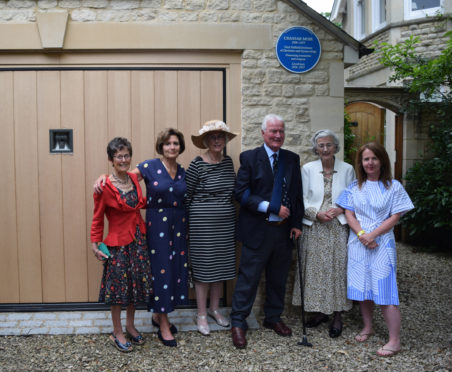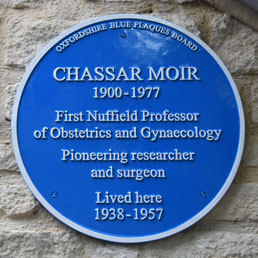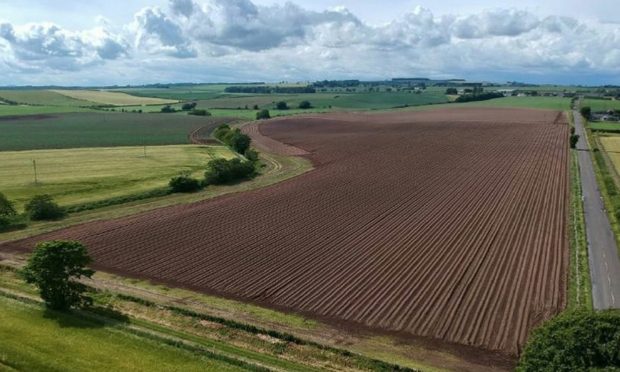The family home of a renowned gynaecologist who spent his formative years in Angus and whose work was described as “one of the great medical advances of the 20th century” has been marked with a prestigious blue plaque.
Professor Chassar Moir was born in Montrose in 1900 and attended Montrose Academy.
He went on to read medicine at Edinburgh University at the age of 17, becoming a Fellow of the Royal Colleges of Surgeons (FRCS) in 1926 and later, Fellow of the Royal College of Obstetricians and Gynaecologists.
He gained experience at various hospitals around Edinburgh and later as a GP in Redhill, Surrey.
Family and friends gathered for the unveiling of the plaque by his son, John Moir, at 11 Chadlington Road, Oxford.
Prof Moir died in 1977 and his family linked up with the Oxfordshire Blue Plaques Board to erect the tribute at the house where he lived between 1938 and 1957.
Tribute was given by David Barlow, Nuffield Professor of Obstetrics and Gynaecology Emeritus whilst John’s sister, Jane, added a family perspective.
In 1932 Professor Moir took up a research post at University College Hospital, London.
He had long been interested in the potential of ergot, a rye grass fungus, for stemming haemorrhages after childbirth, the cause of many deaths.
He collaborated with the biochemist Harold Ward Dudley and they developed the fast-working drug Ergometrine which has saved countless lives.
The Lancet recorded in his obituary “it was one of the great medical advances of the 20th century and was a true gift to world medicine”.
Prof Moir made further significant improvements in the field, introducing an improved nitrous oxide apparatus to relieve pain in childbirth and pioneering the use of X-rays.
A renowned operative surgeon, he developed techniques for the repair of debilitating birth injuries.
In 1937 he was appointed first Nuffield Professor of Obstetrics and Gynaecology at the University of Oxford and was in charge of the newly expanded Nuffield Maternity Home at the hospital.
After the outbreak of war he arranged for a maternity unit to be set up at Ruskin College premises when the infirmary was overwhelmed by pregnant refugees arriving in Oxford from London.
He instituted a flying-squad service to be sent out to attend critical home deliveries.
He received many honorary degrees from British and overseas universities and was awarded a CBE in 1961. In retirement he moved to Charlbury.
He would travel up to London to work in an honorary capacity almost until the time of his death.
His funeral service was held in Charlbury and he was buried in the family lair at Sleepyhillock Cemetery, Montrose.
Commenting on the plaque his daughter, Priscilla, said it was a “splendid honour” to her father.
She added: “He was absolutely devoted to his work.”











